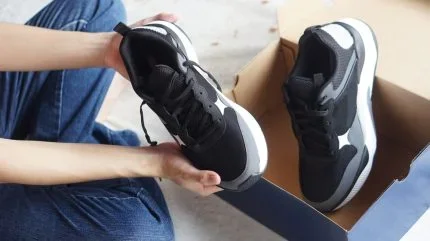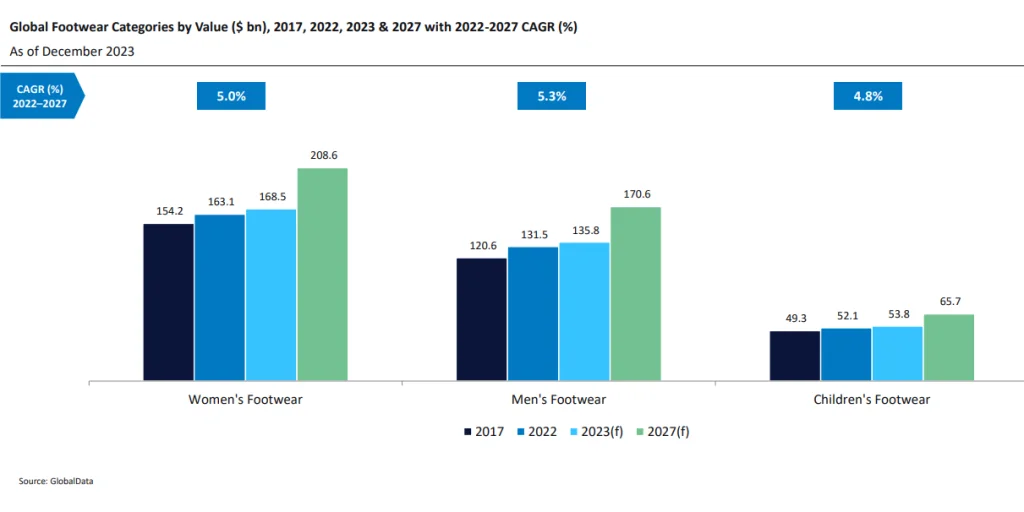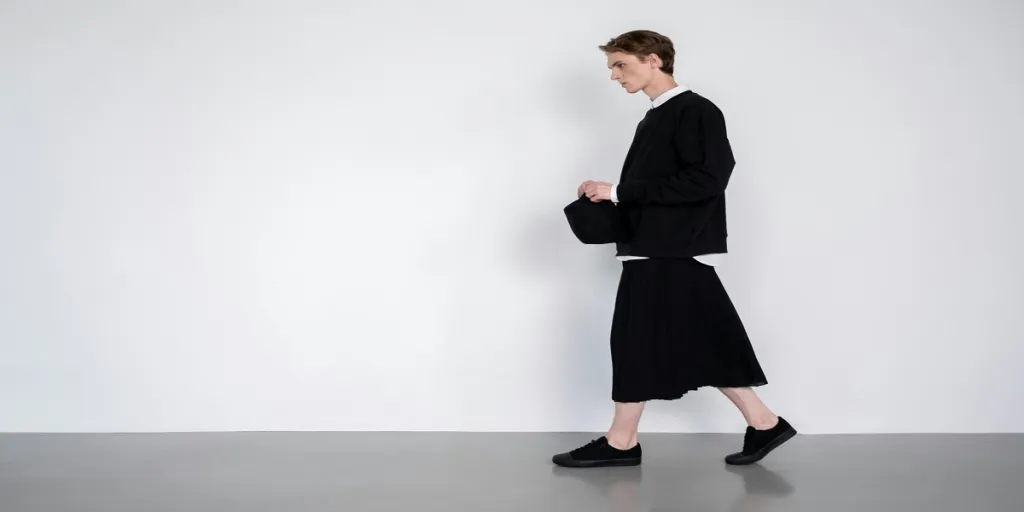New data reveals that leather footwear leads in export value, contributing 38% of the total market, but in terms of sheer volume, rubber and plastic footwear have emerged as the dominant force, accounting for half of global exports.

According to the latest World Footwear Yearbook, the global footwear export market continues to showcase a distinct division between value and volume.
The report identifies three key categories driving the global market: rubber & plastic, leather, and textile footwear. Together, these segments represent 94% of the total export volume and 97% of the total value. Despite some fluctuations in market share over the past decade, these figures have remained stable.
In the early half of the last decade, textile footwear saw a significant rise in market share at the expense of rubber, plastic, and leather footwear. However, this growth tapered off in recent years, with textile footwear’s market share dipping by 2 percentage points in 2023.
While rubber & plastic footwear dominate the volume of exports at 50%, textile footwear follows with a 29% share, and leather footwear comes in at 15%. However, when looking at export value, leather footwear’s premium status is clear, leading the market with 38%, while rubber & plastic and textile footwear each account for around 29-30%.
Trainers to outperform as rubber, plastic footwear innovations lead the way
Trainers have become the preferred footwear style for many, due to their comfort and versatility, which GlobalData report “Global Footwear Market to 2027,” says means brands focusing on shoes and boots must also try to improve the wearability of their products to compete.
As a result, the category is outperforming, with a projected CAGR of 6.2% from 2022 to 2027, compared to 5.1% for the total footwear market. Trainers will also drive the outperformance of men’s footwear out to 2027 as males seek greater variety and limited-edition styles.

Brands have been introducing features such as cushioned soles to improve the comfort of more traditional footwear.
Players such as Russell & Bromley and Hugo Boss are adding rubber soles to their formal shoe styles, improving comfort, durability and grip.
Other mainstream brands have also been incorporating more sustainable materials into their footwear ranges, such as adidas, which has partnered with Parley, a global environmental organisation, since 2015.
Adidas has been increasingly using Parley Ocean Plastic, a polyester replacement made from ocean plastic waste, in its products, and released the first-ever football boots made with Parley Ocean Plastic in March 2023.
Source from Just Style
Disclaimer: The information set forth above is provided by just-style.com independently of Alibaba.com. Alibaba.com makes no representation and warranties as to the quality and reliability of the seller and products. Alibaba.com expressly disclaims any liability for breaches pertaining to the copyright of content.





 Afrikaans
Afrikaans አማርኛ
አማርኛ العربية
العربية বাংলা
বাংলা Nederlands
Nederlands English
English Français
Français Deutsch
Deutsch हिन्दी
हिन्दी Bahasa Indonesia
Bahasa Indonesia Italiano
Italiano 日本語
日本語 한국어
한국어 Bahasa Melayu
Bahasa Melayu മലയാളം
മലയാളം پښتو
پښتو فارسی
فارسی Polski
Polski Português
Português Русский
Русский Español
Español Kiswahili
Kiswahili ไทย
ไทย Türkçe
Türkçe اردو
اردو Tiếng Việt
Tiếng Việt isiXhosa
isiXhosa Zulu
Zulu